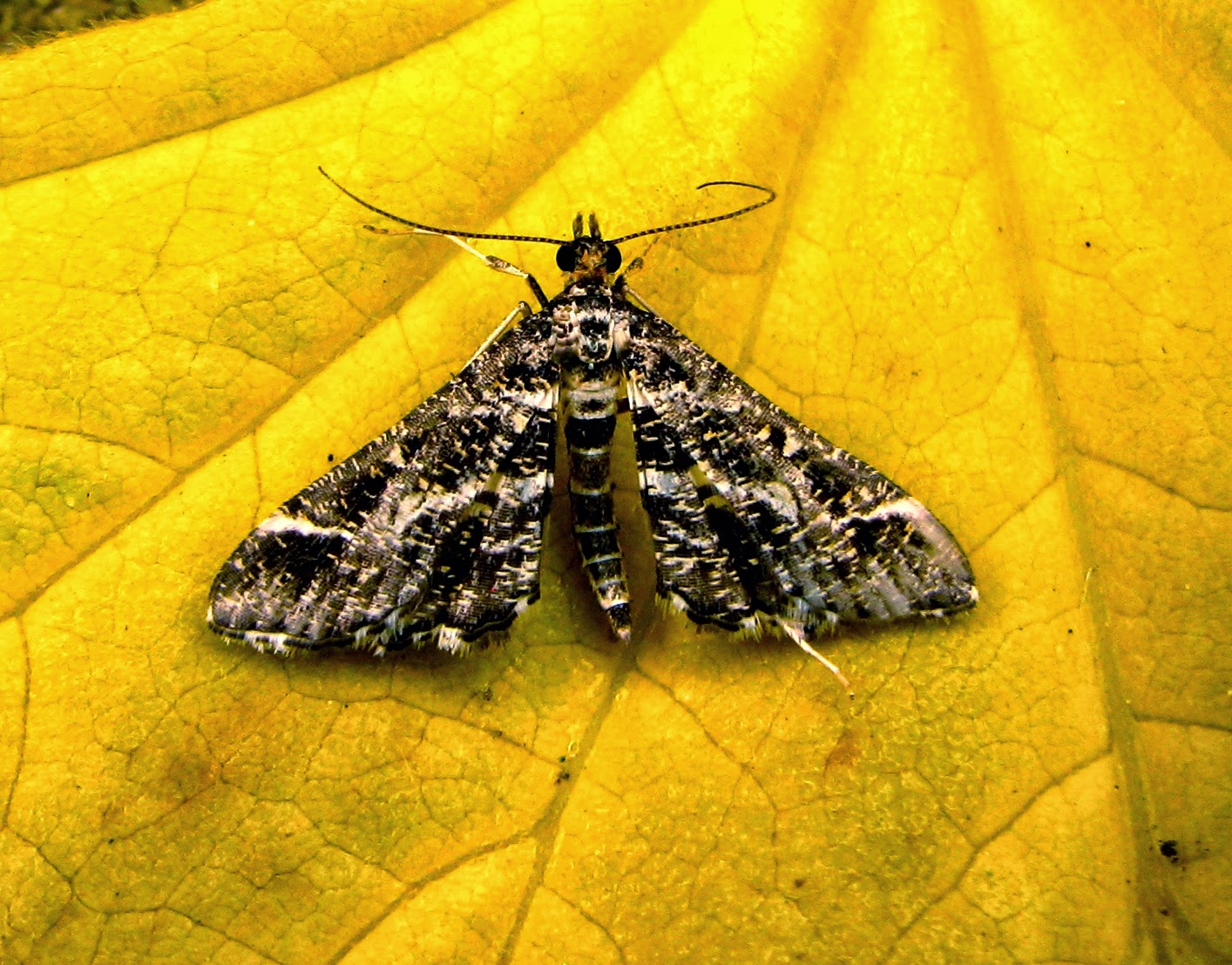So to start again, a brief resume of 2014.
New species are great, especially if they are attractive as well. And if you stumble across them with no knowledge of their presence on the site, that just makes for an exciting day. That's how it was when I found several freshly-emerged Anania funebris at a woodland site in Kent.
A trip to Dungeness was bound to produce a lot of interest in terms of flora and fauna as well as the atmosphere of this unique area. I didn't think there was much chance of seeing the micro moth specific to Nottingham Catchfly but the cases were soon found on plants with obvious feeding damage on the leaves, and then adult moths started appearing.
Coleophora galbulipennella
Easier to find, especially when you get an invite into the garden, was the Stinking Hawksbeard.
A trip to the Chilterns just to say that 'the soldiers are in their field'. Military Orchid at Homefield.
I met up with Jonathan for a fabulous day in Kent. Late Spider Orchids....
and a Black-veined White.
"Hello? Is that the Butterfly ID Helpline?...."
And we finished the day with a Rambur's Shieldbug.
Longhorn beetles always rock! This Musk Beetle was a surprise at the PSL meeting at Woodwalton Fen and a new species for me.
Not a new species but a dozen or so Golden-bloomed Grey Longhorns (Agapanthea villosoviridescens) at Old Winchester Hill made for a very special day.
It became known that it was a good year for the Scarce Fungus Weevil, so I was very keen to find one of my own. I started off with a number of Platystomus albinus which looks similar
and eventually found a Scarce Fungus Weevil (Platyrhinus resinosus) under a log.
Eventually I couldn't resist the lure of catching up with one of my bogey birds when Bee-eaters bred successfully on the Isle of Wight.
Two random species I was pleased to catch up with were the Cheese Snail
and the Heather Shieldbug, which was swept from heather!
Thanks to a message from Steve Gale, I finally caught up with Ground Pine - a plant I've wanted to see for many years.
And so to the autumn and I finally found a species I've wanted to see since childhood - the iconic Death-cap.
It was a fabulous season for Magpie Inkcaps.
I found an excellent local site for fungi. Species included Parasitic Pinkgill
and Yellow Fan.
And in the New Forest, the legendary Devil's Fingers was a much-wanted new species.
The moth trap resurfaced in October as warm air hit Britain from the south. Even at my inland site in the Weald, an influx of Palpita vitrealis arrived over a couple of nights.
And a single Diasemiopsis ramburialis.























Brilliant Sarah - wish I had the time and dedication to 'get out there' as much as you do!
ReplyDeleteWhat a great year you had Sarah. Please keep blogging...
ReplyDeleteThanks Mike and Steve. I'm very fortunate with the amount of time I have available at the moment - a combination of the silver lining around a bloody dark cloud and also being child-free ;)
ReplyDelete